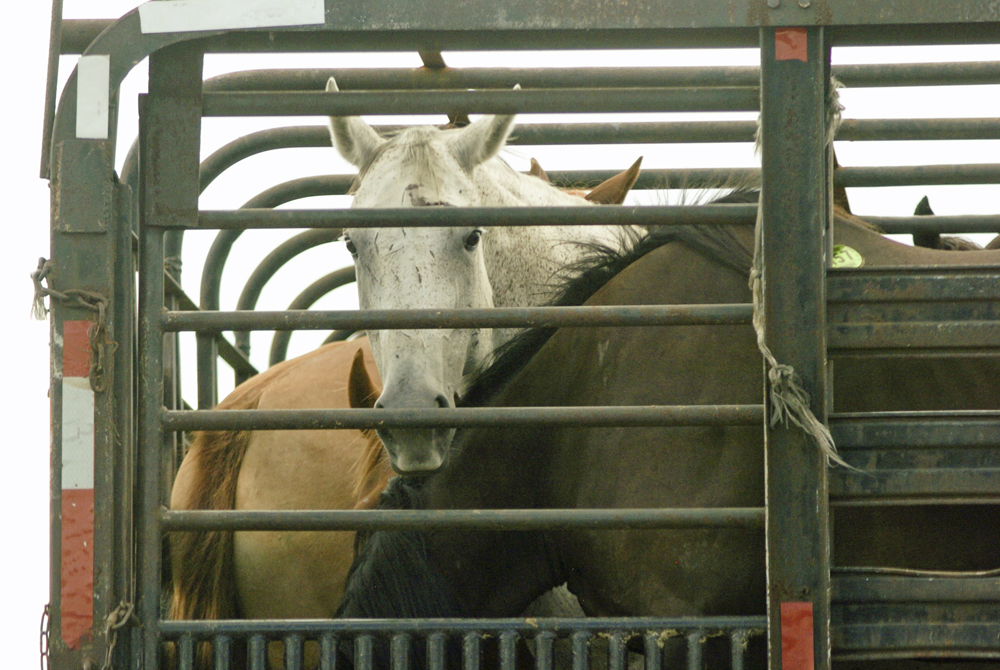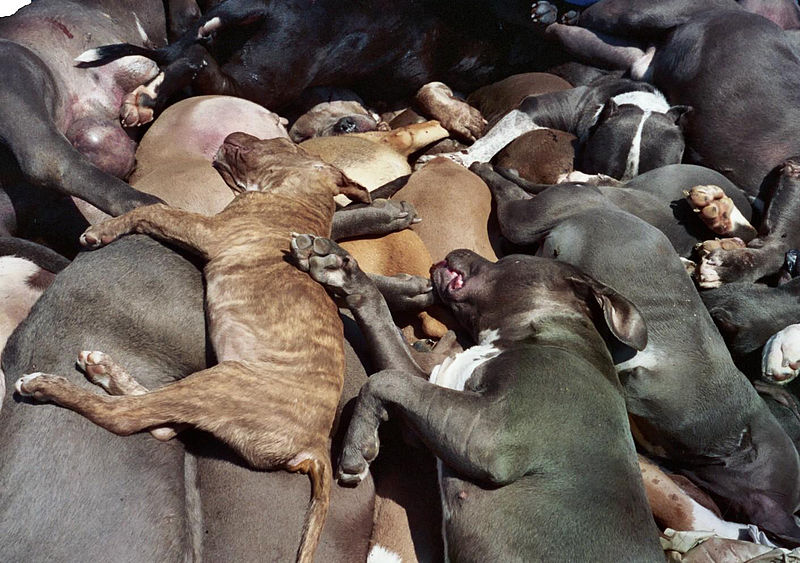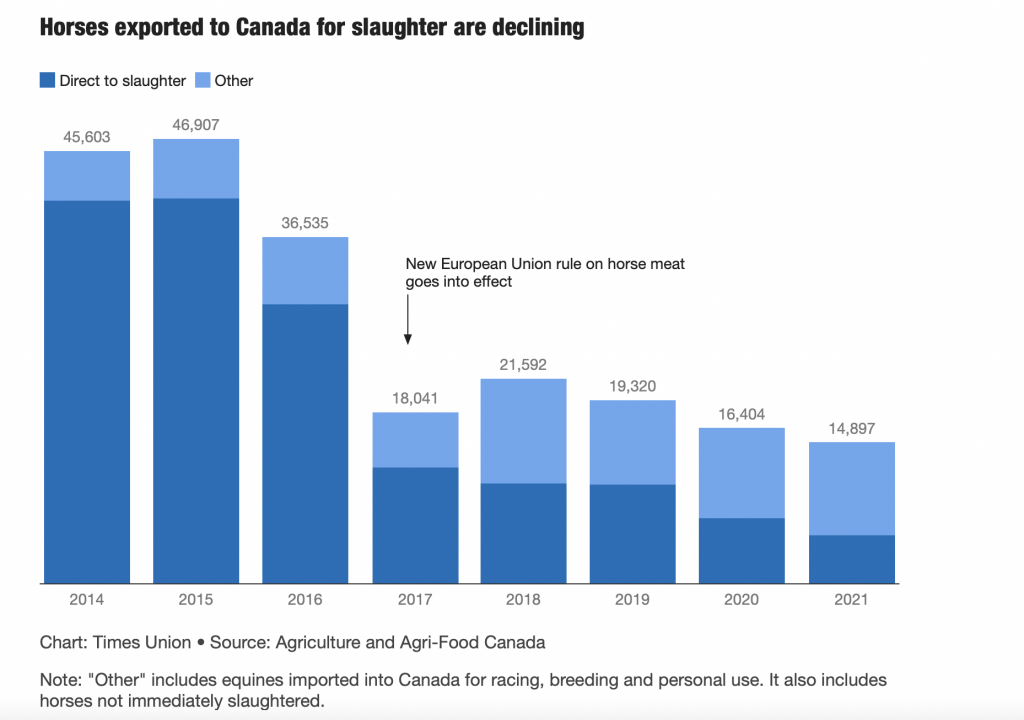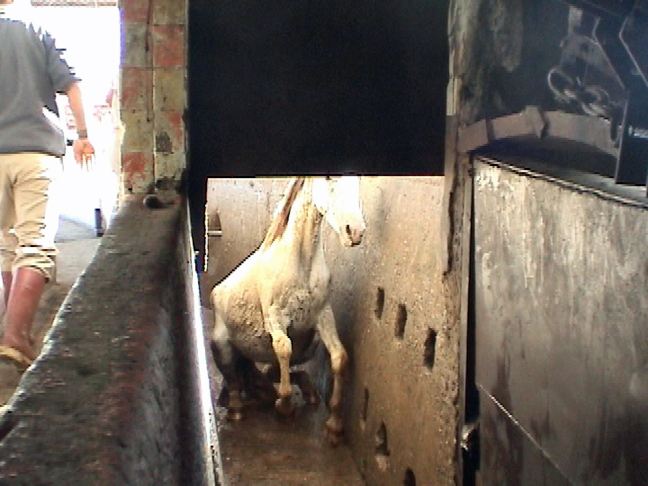
By Nancy Thomas
Last week, I launched the first post in a series about the equine slaughter industry. This is not a series I planned to write. My eyes were blown open by a training module I completed as part of my veterinary continuing education requirements. In the week before Part One was posted, I crawled further and further down a rabbit hole as I spoke to countless individuals on different sides of this issue. Each door that I opened revealed several more doors to explore. To say that this is a complicated issue would be the ultimate understatement.
Before I delve into the history of equine slaughter in the United States, I want to address my personal viewpoint on this practice. Last week, I stated that I have been having conversations with Dr. Lorna Grande, a veterinarian with the Humane Society Veterinary Medical Association. Lorna has taught classes on Animal Welfare.
"There are a lot of “Gotcha” things in the animal welfare world."
Dr. Lorna Grande, Program Director, Education and Outreach, Humane Society Veterinary Medical Association.
What does she mean by that? There are two aspects to that statement.
On the one hand, she is referring to the fact that we all have our sensitivities, and we manifest them in different ways. I personally cannot fathom sending my horse to an auction, knowing the high probability of my beloved horse landing in the horse trader or slaughter pipeline. But I’m not a vegetarian! My sentiments don’t preclude me from sending cattle to a slaughterhouse. Do I want to think about that hypocrisy? No, I don’t.
The other “GOTCHA” is how people perceive or dismiss your message if they don’t agree with absolutely everything you believe. I am educating myself about this industry as much as I am trying to educate you. There are many, many variables when one is talking about “animal welfare.” Let me give you an example in the small animal world…

As one of the most dedicated dog lovers on the planet, the concept that an animal shelter would have euthanized dogs piled up in a back room just devastates me. I find breed-specific legislation abhorrent. I am an advocate of “no kill” shelters… to a point. A medically or emotionally fragile or debilitated animal, or a dangerous one, might best be served by euthanasia, rather than prolonging their physical or mental suffering.
So I guess that means I am in favor of “mostly no-kill shelters” because there would certainly be times when a dog is simply not adoptable. If they are emotionally afraid of everything and everyone, can they really have a decent quality of life? At what cost? And at what danger to the public? ... So if you are a believer in total no-kill shelters, can you find my views and my research about equine slaughter credible?
As you read this series, there will be a multitude of twists and turns. Whereas I set out to uncover the veterinarian’s role in “regulating” this industry, I have realized that it is much, much bigger than that. Fasten your seatbelt, and try to keep an open mind about all of the information I hope to present.
My views on equine slaughter
Regardless of the fact that my eating habits subject cattle to a slaughterhouse, I am firm in my belief that horses are not livestock that should suffer the same fate. Their “fight or flight” mentality makes them extremely unsuited for a swift and painless execution in a slaughter box. This is just one aspect of this atrocity… what they experience when they finally get to Mexico or Canada.

The journey they must endure on the way to that disastrous endpoint is an incredible atrocity in itself. Apparently, there are recommended regulations but no one has the authority to enforce them. I am seriously conflicted about how some members of my profession are so willing and able to turn a blind eye to this suffering.
The history of equine slaughter in the United States
A Timeline of Horse Slaughter Legislation in the United States is an article written in 2012 and updated in 2014. Another great resource is The History of Horse Slaughter. Refer to these articles if you want specifics about the timeline I will share.
There were equine slaughterhouses operating in the United States until 2007. At various points in time, there were facilities in California, Texas, and Illinois. California banned the practice in the late ’90’s. The Texas and Illinois facilities continued to operate until legislation introduced in June 2005 began the process of shutting them down.
In June 2005, an amendment passed the House that prohibited funding for inspections of horses for slaughter. In September of that same year, Senator John Ensign, a Nevada veterinarian, proposed a similar amendment to the Senate. I pulled the following information from a transcript I found when he proposed the amendment. The views expressed by Senator Ensign are at the core of this entire issue.
Mr. President, I rise, along with my colleagues, Senators BYRD, LANDRIEU, GRAHAM, LOTT, STABENOW, DEMINT, FEINSTEIN, and LAUTENBERG, to submit an amendment to the 2006 Senate Agriculture appropriations bill.
The goal of our amendment is simple: to end the slaughter of America’s horses for human consumption overseas.
I graduated from Colorado State with a degree in veterinary medicine. I have been concerned with animal welfare since my earlier days as a youth and pursued those interests as a practicing veterinarian.
Our Nation’s history and cultural heritage is strongly associated with horses. George Washington is pictured many places with horses. We are reminded of the legend of Paul Revere’s ride and the Pony Express in the West. The Depression era race between Seabiscuit and War Admiral raised the morale of our country during desperate times.
The owners who sell their horses at auction are often unaware that those horses may be on their way to one of the three remaining horse slaughterhouses in America. These slaughterhouses–two in Texas and one in Illinois–are owned by French and Belgium companies. They slaughter American horses almost exclusively for one purpose– exporting the meat overseas for human consumption.
Workhorses, racehorses, and even pet horses–many young and healthy– are slaughtered for human consumption in Europe and Asia, where their meat is considered a delicacy. The profits, along with the product, are shipped overseas. These horses are slaughtered in America and shipped to Japan, France, Belgium, Italy, Germany for human consumption.
Last year, nearly 100,000 American horses were slaughtered for human consumption overseas. Sixty-five thousand of these were sent to three slaughterhouses in the United States, and more than 30,000 were shipped across our borders to Canada and Mexico for slaughter.
Our amendment effectively stops this practice. It restricts the use of Federal funds for the inspection of horses being sent to slaughterhouses for human consumption. Without these inspections, required under the Federal Meat Inspection Act, horses cannot be slaughtered, or exported for slaughter, for human consumption overseas.
Dr. Ensign believed that stopping inspections would stop the slaughter. He was wrong. In February 2006, a bill was passed that allowed the slaughterhouses to pay for their own inspections. In March 2007, that loophole was closed. That same month, the Texas facility closed due to community pressure, in addition to the increasing hassle of operating the plant. The Illinois plant fought to stay open but lost its battle in September of that year.
In November 2011, the agriculture appropriations bill for 2012 was passed without any wording that prohibited the funding of horse inspections for slaughter. In January 2014, President Obama signed into law a bill that once again prohibited funding for equine slaughter inspections.
From 2014 until the end of 2021
<p;> Every year between 2014 and 2020, a Federal bill titled Safeguard America’s Food Exports has been presented to Congress. The acronym is, of course, SAFE and the bill would have made the slaughter of equines illegal both at home and abroad. It has enjoyed widespread bipartisan support but has never been passed. It begs the question, Why?
In May 2021, a bill named Save America’s Forgotten Equines (SAFE) was introduced to the House. It also prohibited the slaughter of American horses both domestically and internationally. More on that shortly…
In June of the same year, an amendment to a Federal transportation bill prohibited the movement of horses intended for slaughter over state or national borders. It passed unanimously in the House but never made it to the Senate.
In December 2021, the New York Governor signed a bill that prohibited New York racehorses and breeding stock from being sold to slaughter for the purposes of human consumption.
June of 2022
The SAFE Act was initially introduced in May 2021. In June of that year, a House subcommittee unanimously approved it. Apparently, it made it to a committee where it subsequently died.
I have learned from a great deal of research as well as personal conversations that both the AVMA (American Veterinary Medical Association) and AAEP (American Association of Equine Practitioners) oppose this legislation. I had a long conversation with Keith Kleine, Director of Industry Relations for AAEP. He is not a veterinarian. He stated that AVMA and AAEP are “opposed to the legislation because of unintended consequences.” He continued by stating:
If new legislation is introduced and it is similar to previous bills, it is likely to be opposed.
Keith Kleine, AAEP Director of Industry Relations
I asked the direct question, “What is AAEP doing to address this issue?” Keith responded, “AAEP continues to work with agencies providing resources for proper transportation and care. There is information available to shippers, state agencies, APHIS, and State animal health officials. We spend time on the proactive part instead of opposition… we partner with ASPCA to provide the Vet Direct Safety Net and direct resources for individuals. We invest in trying to better educate owners and make them more responsible. We support and invest in programs and nonprofits providing resources for adoption and better care.”
One of my final questions revolved around whether or not AAEP had any plans to reconsider their position or explore how this is actually playing out in the real world. He responded, “We are not an enforcement agency… when other issues come to the forfront that we need to address and that have priority, we do.” I interpreted that to mean that the suffering of horses subjected to slaughter is not a priority issue that they intend to address.
So… it begs the question… Why did this bill die after reaching a committee? Is it possible that lobbyists for AVMA and AAEP had something to do with its demise? Perhaps they do spend some time in opposition? If I were a legislator, I would lend a considerable amount of credibility to the AVMA or the AAEP. If those premier organizations don’t believe in the bill, why would a less-invested and less-educated-about-the-topic legislator?
According to Mr. Kleine, 75% of the AAEP membership agrees with their position. I have followed up our initial conversation with some email questions, including what percentage of their membership responded? How did they conduct this poll? I should also note that, although I reached out to the AVMA, they have not returned my call.
American Quarter Horse Association position
Rather than just give the AVMA and AAEP all the “credit”, lets look at the official American Quarter Horse Association position:
AQHA opposes abolishing the option of horse processing until there are other provisions to take care of more than 150,000 horses that meet that end each year. Consistent with positions established by the American Association of Equine Practitioners and American Veterinary Medical Association, AQHA supports the humane, USDA supervised end-of-life process as a much better option than starvation, neglect or inhumane treatment inside or outside of the United States.
To date, no proposed state or federal law has addressed funding of care for unwanted horses, long-term placement of affected horses or established guidelines for standards of care at retirement and rescue facilities. Failing to address these core issues adversely affects the welfare of horses.
Additionally, horses as livestock are personal property protected under the United States Constitution. Any law that would result in “taking” of personal property without just compensation or valid purpose is a violation of an individual’s constitutional rights. Furthermore, it is a violation of the Commerce Clause to unreasonably restrict interstate trade of property.
Therefore, AQHA continues to oppose the provisions of state or federal legislation intended to: (a) prohibit the humane end-of-life processing of horses; and (b) prohibit the humane transport of horses that may be destined to processing plants.”
Let’s look at the numbers!
Mr. Kleine from the AAEP provided me with the most recent statistics related to the number of horses sent to slaughter. As of June 2022, 1022 horses had been shipped to Canada. The total for all of 2021 was 5139, and for 2019 it was 10,486.

Mexico’s numbers are higher:
2022 - 20,783
2021 - 23,498
2020 - 34,496
2019 - 59,928
2018 - 77,962
2016 - 86,512
Provided by US Mexico livestock trade Ag marketing services USDA
There are so many things wrong with that statement from AQHA. First, let’s check their numbers. Do the statistics above support the statement that “more than 150,000 horses” are being slaughtered every year? Second, do they really think that this is a “humane, USDA supervised end-of-life process“? If you haven’t already, read Part One of this series where I describe the apparent lack of veterinary regulation on this industry! These horses are not “humanely slaughtered” OR “humanely transported”.
Equine slaughter

The number has diminished to the point that AVMA, AAEP, and AQHA’s position about “unintended consequences” is questionable. “What will happen to all of these horses?” they cry. It seems totally feasible that these “unwanted” horses could be absorbed within the current equine community.
A Press Release from the Humane Society Legislative Fund
The Humane Society Legislative Fund (HSLF) published a Press Release in December 2022. More than 200 veterinarians express support for legislation to permanently end the slaughter of American horses. In another publication by HSLF, they state that The Save America’s Forgotten Equines (SAFE) Act (HR 3355/S 2732), would permanently ban domestic horse slaughter in the U.S. and stop the export of American horses for slaughter abroad — practices that 80% of Americans support banning.
The Save America’s Forgotten Equines (SAFE) Act (HR 3355/S 2732), would permanently ban domestic horse slaughter in the U.S. and stop the export of American horses for slaughter abroad — practices that 80% of Americans support banning.
Humane Society Legislative Fund
I encourage you to follow the link above and read the HSLF Press Release. Dr. Lorna Grande is quoted as saying:
“The slaughter of American horses for human consumption in foreign markets continues to exist mostly to accommodate industry participants who exploit horses for money and prestige. Shipping horses, who are naturally skittish, long distances in packed trailers to a slaughterhouse where they will be crowded together in chutes to be pushed toward their death is the antithesis of humane euthanasia,” said Dr. Lorna Grande, program director for advocacy and outreach for the Humane Society Veterinary Medical Association. “Horses deserve better. Greedy industries will continue to take advantage of slaughter as long as this easy, out of sight, out of mind ‘disposal’ exists.”
- Dr. Lorna Grande
I simply do not understand how the AQHA can publicly declare that this is a humane and reasonable approach to reduce the domestic equine population. Perhaps they know more than Dr. Nicholas Dodman, a founding member of Veterinarians for Equine Welfare and one of the world’s most noted and celebrated veterinary behaviorists.
It is the united professional opinion of the members of VEW that horse slaughter is inhumane, and that it is an unacceptable way to end a horse’s life under any circumstance. One need only observe horse slaughter to see that it is a far cry from genuine humane euthanasia. From the transport of horses on inappropriate conveyances for long periods of time without food, water or rest – to the very ugly slaughter process in which horses react with pain and fear, no evidence exists to support the claim that horse slaughter is a form of humane euthanasia. Rather, it is a brutal process that results in very tangible and easily observable equine suffering.
- Dr. Nicholas Dodman (see the full transcript here)
In the interest of fairness, I must state that I don’t know how HSLF conducted their poll that determined that 80% of Americans oppose domestic horse slaughter… but I don’t doubt their statistic. I do wonder how 75% of equine veterinarians believe that banning a practice which currently has limited or absent veterinary oversight and which clearly is a devastating experience for a horse can be an appropriate position.
What’s next?
Again, let me reiiterate that this series is taking on a life of its own. I have learned the following facts about this incredibly complicated and under-the-radar industry:
- Did you know that some breeders use slaughter as a means of disposing of unwanted horses? I heard about one breeder that had a “junk pasture.” She threw what she didn’t want on a lush pasture to fatten them up, and then off they went to Canada. I had no idea that a breeder would do that…
- Did you know that some highly visible equine rescues practice “bait and switch”? They post photos of horses they think will get the social media community to cough up the dollars, and then they don’t even bid on those horses. True, sometimes a horse they intend to bid on “gets away”… but other times they never intend to buy a horse they photographed. I didn’t know that… and I will be addressing this in a future blog, with suggestions on how to do your own “due diligence” to evaluate the legitimacy of a rescue organization.
- Did you know that only a few people have a contract to purchase horses for slaughter, and everyone else in the pipeline is a middleman? The quotas are small enough that actual kill buyers want the horses fat enough to bring some money. The highly debilitated ones end up on the webpages of horse brokers with the decree that “This horse will be sold to slaughter if you don’t rescue it right now!” It is a cottage industry built on the slaughter industry. A great deal of horse brokering raises a whole lot of money for these middlemen. I didn’t know that…
Stay tuned for a much deeper education.
There are more informative articles in our sections on Retire & Rehome and Health & Education.

































